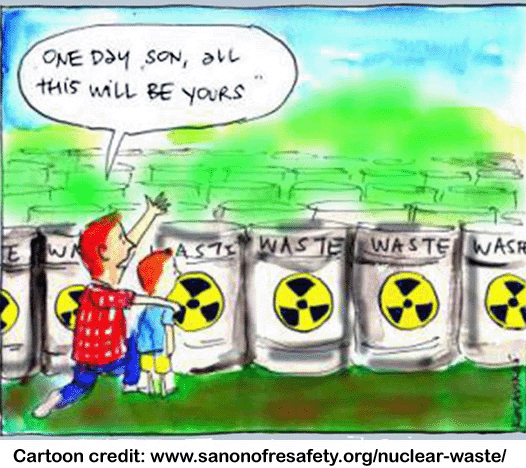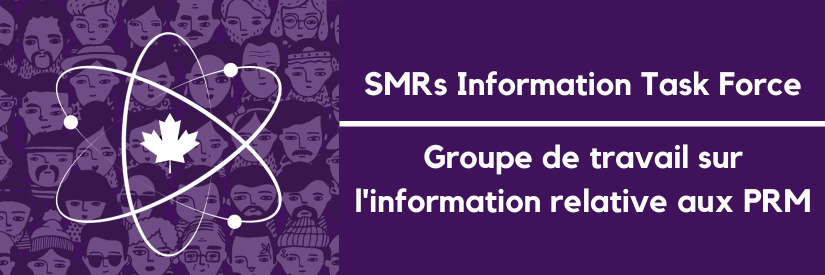The world is bequeathing to our descendants the costly nightmare of unsolved nuclear waste disposal
Nuclear legacy is a costly headache for the future, https://climatenewsnetwork.net/nuclear-legacy-is-a-costly-headache-for-the-future/
June 28th, 2021, by Paul Brown How do you safely store spent nuclear waste? No-one knows. It’ll be a costly headache for our descendants.
LONDON, 28 June, 2021 − Many states are leaving future generations an unsolved and costly headache: how to deal with highly dangerous nuclear waste.
The decision to start closing down the United Kingdom’s second generation of nuclear power stations earlier than originally planned has highlighted the failure of governments to resolve the increasingly expensive problem of the waste they leave behind them.
Heat-producing radioactive spent fuel needs constant cooling for decades to avoid catastrophic accidents, so future generations in countries that have embraced nuclear power will all be paying billions of dollars a year, every year, for at least the next century or two to deal with this highly dangerous legacy.
A report by the Organisation for Economic Cooperation and Development (OECD) and its Nuclear Energy Agency looks at 12 member countries facing the problem: Belgium, Canada, Finland, France, Germany, Japan, South Korea, Spain, Sweden, Switzerland, the UK and the US.
The report shows that none of the 12 has yet got to grips with the legacy bequeathed by producing nuclear waste. None has any means yet of disposing of it. It says every country must quickly realise that the money the industry has put aside to deal with the problem is inadequate, leaving successive future generations with the bill for keeping themselves safe.
Failure to progress
Finland is closest to dealing with the internationally preferred route for making spent nuclear fuel safe: building an underground repository in rocks deep underground to store and ultimately seal up the waste in this final burial place.
The Finns have actually started building such a facility and regard it as the complete solution to the problem, even though it is still decades away from completion.
Finland’s progress is a shining example to the rest of the nuclear world. International rules require countries that create nuclear waste to deal with it within their own borders − yet most governments have failed to make progress on doing so. Some have spent decades looking for a suitable site and have failed to find one.
This has often been because local opposition has forced governments to abandon a chosen location, or because scientists judge the site too dangerous to store wastes for the required 100,000 years or so, because of poor geology. They may suspect a risk that the radioactivity could leak into water supplies, or rise to the surface and kill unwary future generations.
The funding shortfall has become much more problematic because of low inflation and the current Covid pandemic. Governments previously put money aside on the assumption that economies would constantly grow and positive interest rates would create massive long-term investments.
But the current low or negative return on government bonds means investments made in the past and designed to pay huge future bills will no longer be enough to deal with the cost of spent fuel and other high-level wastes.
The report says governments’ assumptions have proved optimistic. It is not directly critical of governments, but points out that “the polluter pays” principle is not being applied. New funding needs to be found, it says, if future generations are not to be saddled with this generation’s expensive and life-threatening legacy.
The UK, one of the pioneer nuclear states because of its race to develop a nuclear bomb, is a classic example of leaving the grandchildren to pay for past and present nuclear wastes.
As early as 1976, in the Flowers Report on nuclear power and the environment, the UK was warned that it should not build any more nuclear power stations until it had found a way of getting rid of the waste. The government agreed.
Since then, for more than 40 years, successive governments have been looking for a repository to make good on their promise. But none has yet been found, and none is expected until the current target date of 2045.
True cost unknown
Yet the OECD says the original nuclear weapons programme, plus the first generation of nuclear stations, now all closed, are costing today’s taxpayers US$4.58 billion a year (£3.3bn) just to manage the waste and keep the population safe. The cost is around $185bn (£133bn) for 17 sites over 120 years. There could be liabilities of another $200bn (£144bn) to restore the installations to greenfield sites.
The second generation of nuclear stations can call on the Nuclear Liabilities Fund, set up by the UK government when the French company EDF took over the newer British advanced gas cooled reactors (AGRs) in 2009 so that money from electricity sales could be invested to pay for de-fuelling and decommissioning at the end of their lives. The first of these, Dungeness B, on the English Channel coast, started de-fuelling this month.
The cost of dismantling this generation of reactors is estimated at $28.57bn (£20.59bn) by EDF − $10bn more than the Nuclear Liabilities Fund provides for. This shortfall is almost certainly a large under-estimate because the actual cost of closing the stations and storing the waste is unknown, let alone that of restoring the sites to greenfield conditions.
Partly this is because AGRs have never yet been taken out of service before there is a disposal route for the waste. If none is found, taxpayers will have to pay to keep it safe in closely managed stores for many decades.
Despite this, the current UK government is now building a new nuclear station at Hinkley Point in the West of England, and wants to build many more. Meanwhile the mounting financial liabilities for future generations who will need to keep the waste safe in a time of climate change are left unresolved. And so the costly headache remains for countless generations to come. − Climate News Network
No comments yet.
-
Archives
- April 2024 (300)
- March 2024 (335)
- February 2024 (345)
- January 2024 (375)
- December 2023 (333)
- November 2023 (342)
- October 2023 (366)
- September 2023 (353)
- August 2023 (356)
- July 2023 (363)
- June 2023 (324)
- May 2023 (344)
-
Categories
- 1
- 1 NUCLEAR ISSUES
- business and costs
- climate change
- culture and arts
- ENERGY
- environment
- health
- history
- indigenous issues
- Legal
- marketing of nuclear
- media
- opposition to nuclear
- PERSONAL STORIES
- politics
- politics international
- Religion and ethics
- safety
- secrets,lies and civil liberties
- spinbuster
- technology
- Uranium
- wastes
- weapons and war
- Women
- 2 WORLD
- ACTION
- AFRICA
- Atrocities
- AUSTRALIA
- Christina's notes
- Christina's themes
- culture and arts
- Fuk 2022
- Fuk 2023
- Fukushima 2017
- Fukushima 2018
- fukushima 2019
- Fukushima 2020
- Fukushima 2021
- general
- global warming
- Humour (God we need it)
- Nuclear
- RARE EARTHS
- Reference
- resources – print
- Resources -audiovicual
- World
- World Nuclear
- YouTube
-
RSS
Entries RSS
Comments RSS







Leave a comment